Chart Color Schemes
est. as @ -- *
ABS ERP | -- people | --
2021 Census | -- people
Sales Activity
Curious about local property values? Filter the chart to assess the volume and appreciation (including resales) trends and regional comparisons, or scroll to the map below view this information at an individual property level.
Find a Recent Sale
Sales Detail
Population
Caringbah South has seen population growth performance typically on par with national averages when looking at short and medium term trends
Caringbah South's population was approximately 13,549 as of August 2025. This figure reflects an increase of 534 people since the 2021 Census, which recorded a population of 13,015. The growth is inferred from ABS estimates; the population was 13,506 in June 2024 and there were 183 additional validated addresses since the Census date. This results in a density ratio of 3,329 persons per square kilometer, placing Caringbah South in the upper quartile nationally according to AreaSearch's assessment. The area's growth rate of 4.1% since the 2021 census exceeded its SA4 region's rate of 4.0%. Overseas migration contributed approximately 52.1% of overall population gains during recent periods, with natural growth and interstate migration also being positive factors.
AreaSearch uses ABS/Geoscience Australia projections for each SA2 area, released in 2024 with a base year of 2022. For areas not covered by this data, AreaSearch utilises NSW State Government's SA2 level projections released in 2022 with a base year of 2021. Growth rates by age group from these aggregations are applied to all areas for years 2032 to 2041. Future population trends suggest an increase just below the median of Australian statistical areas, with Caringbah South expected to grow by 1,062 persons to 2041 based on latest numbers, representing a total increase of 7.5% over the 17 years.
Frequently Asked Questions - Population
Development
AreaSearch assessment of residential development activity positions Caringbah South among the top 25% of areas assessed nationwide
Caringbah South has received around 116 dwelling approvals per year over the past five financial years, totalling 581 homes. In FY2026 so far, 17 approvals have been recorded. On average, 1.1 people moved to the area annually for each dwelling built between FY2021 and FY2025, indicating a balanced supply and demand market with stable conditions.
New properties are constructed at an average cost of $654,000, higher than regional norms, reflecting quality-focused development. Compared to Greater Sydney, Caringbah South has seen 29.0% more development per person over the past five years. The area's new building activity consists of 22.0% detached houses and 78.0% medium and high-density housing, shifting from its current 76.0% houses composition due to decreasing developable sites and changing lifestyles. With around 131 people per dwelling approval, Caringbah South is considered a low density area. By 2041, the area is projected to grow by 1,019 residents.
Given current development patterns, new housing supply should meet demand, potentially facilitating population growth beyond current projections.
Frequently Asked Questions - Development
Infrastructure
Caringbah South has very high levels of nearby infrastructure activity, ranking in the top 10% nationally
Changes to local infrastructure significantly influence an area's performance. AreaSearch has identified 14 projects likely impacting the area. Notable ones are Caringbah Pavilion, Caringbah Greens, Live Caringbah, and Nura Caringbah. The following details those most relevant.
Professional plan users can use the search below to filter and access additional projects.
INFRASTRUCTURE SEARCH
 Denotes AI-based impression for illustrative purposes only, not to be taken as definitive under any circumstances. Please follow links and conduct other investigations from the project's source for actual imagery. Developers and project owners wishing us to use original imagery please Contact Us and we will do so.
Denotes AI-based impression for illustrative purposes only, not to be taken as definitive under any circumstances. Please follow links and conduct other investigations from the project's source for actual imagery. Developers and project owners wishing us to use original imagery please Contact Us and we will do so.
Frequently Asked Questions - Infrastructure
Sutherland Hospital Redevelopment
A $88.5 million expansion and modernisation of Sutherland Hospital, delivering six new operating theatres, a surgical short stay unit, recovery areas, staff amenities, admission/discharge facilities, an MRI facility, a new central sterilising services department, an upgraded emergency department, an intensive care unit, patient accommodation, and supporting infrastructure. Completed in February 2024 as part of NSW Health's infrastructure investment program.
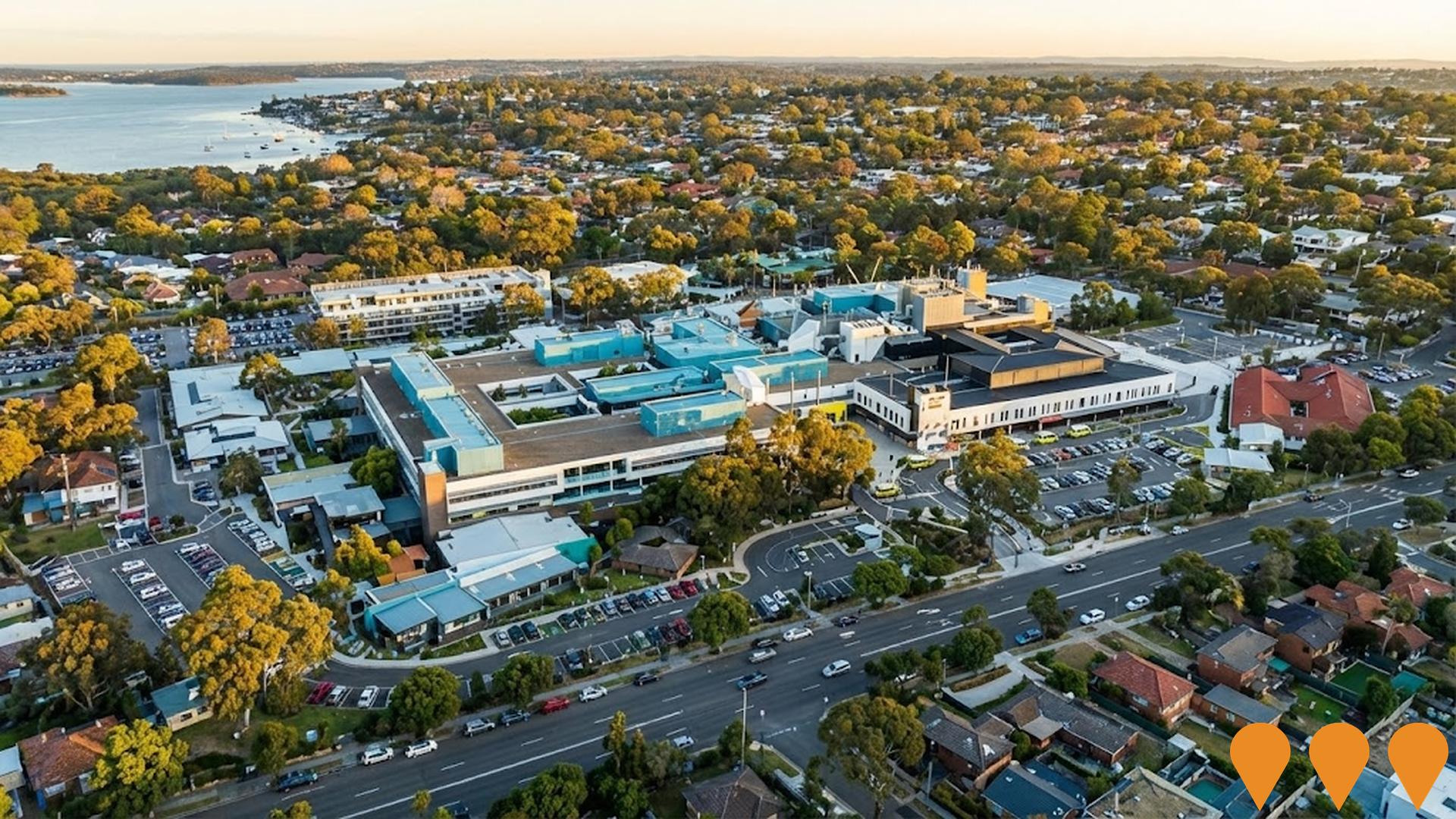
Miranda Centre Place Plan and Public Domain Plan
A strategic planning initiative by Sutherland Shire Council to prepare a 'Place Plan' and 'Public Domain Plan' for Miranda Centre. This work will present a future vision for growth, housing opportunities, and infrastructure investments, and will guide future changes to planning controls (LEP/DCP) to enable increased building height and density in designated areas within and around the commercial centre. It also includes plans for improving public spaces like footpaths, street trees, lighting, and open spaces.
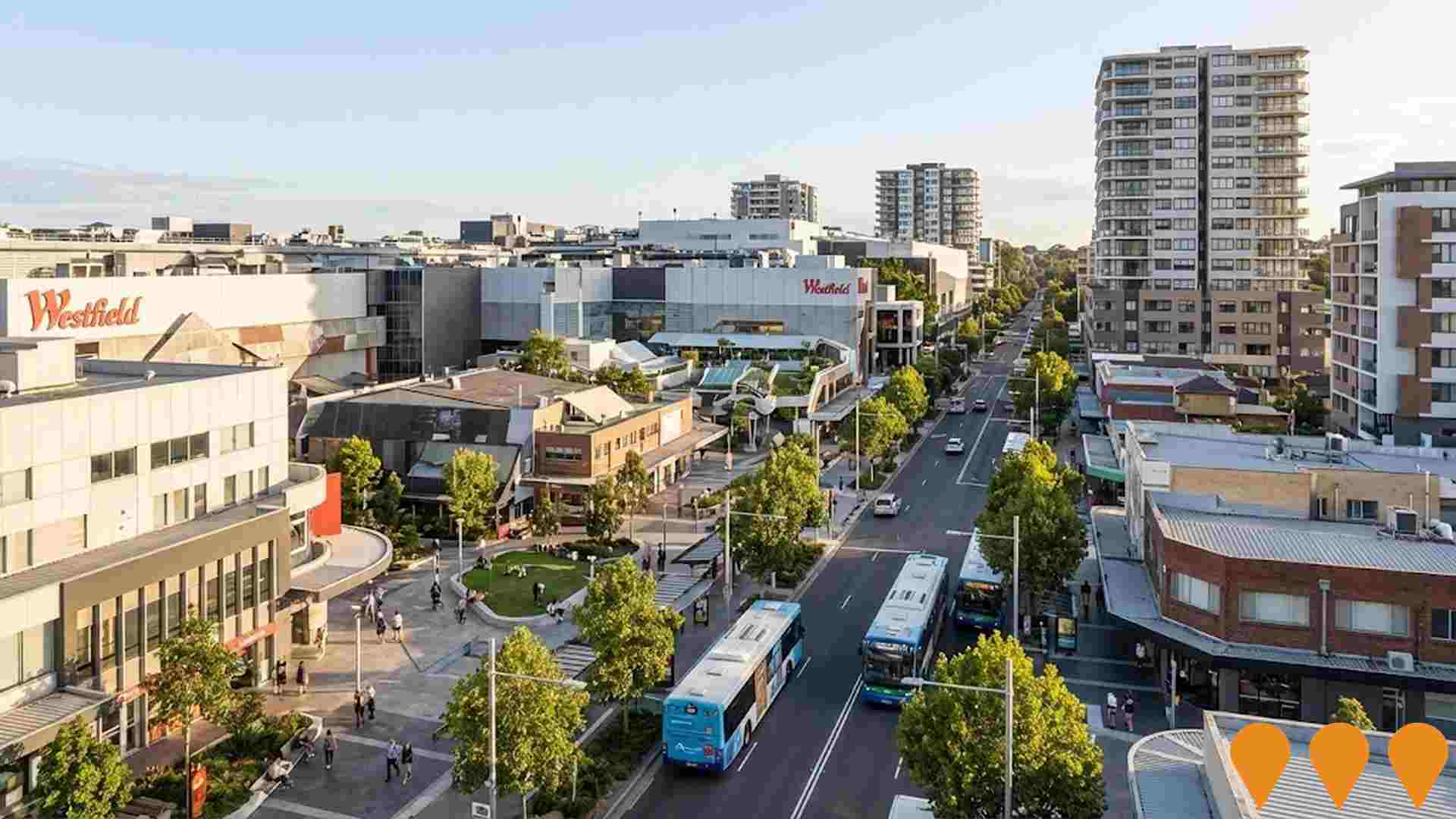
Caringbah Marketplace
Premium mixed-use development site offering up to 5,445 sqm gross floor area anchored by a brand-new 10-year lease to ALDI on a 1,815 sqm E2 Commercial Centre zoned site, strategically located 300m from Caringbah Train Station.
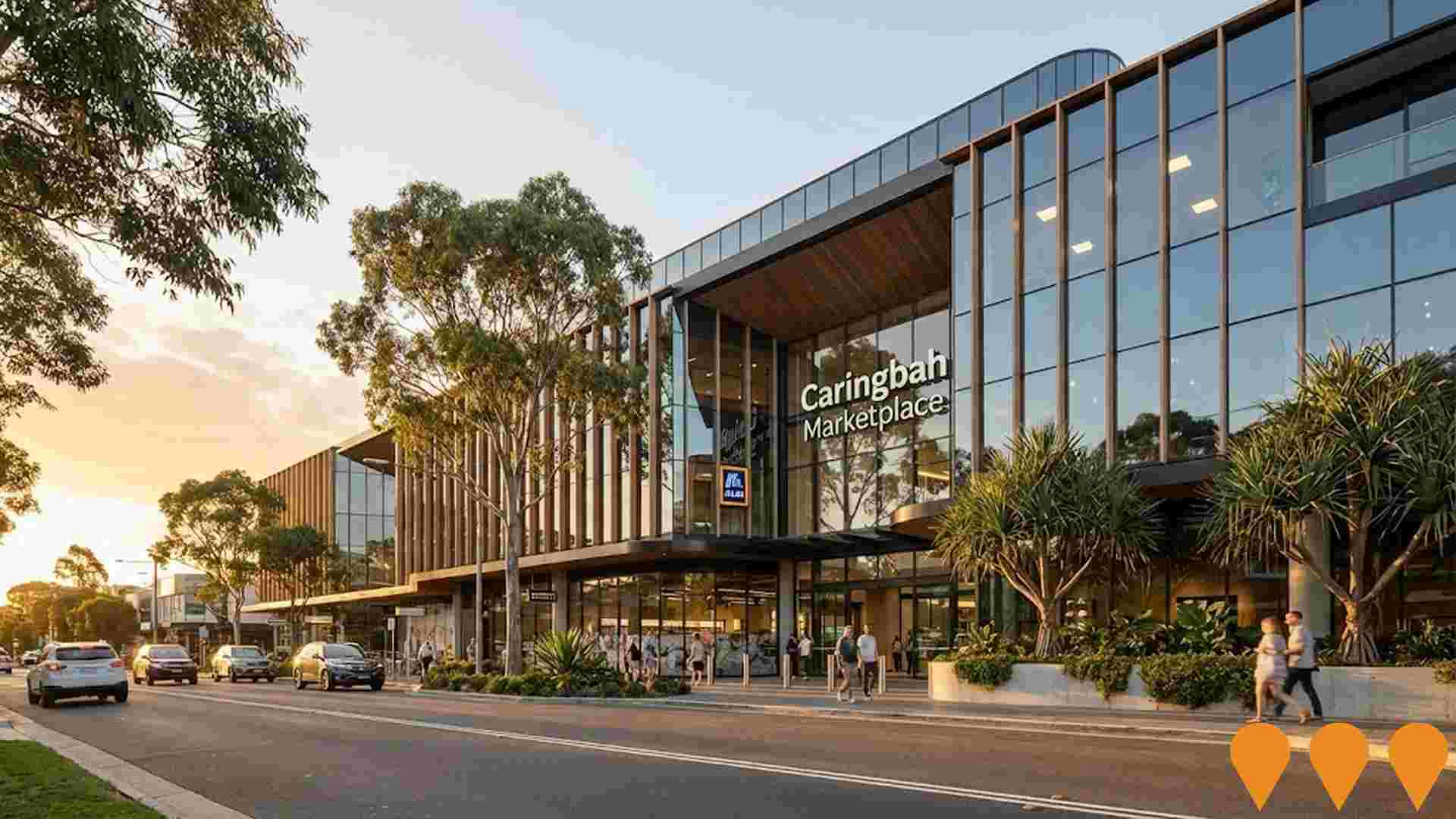
South Village Kirrawee
Mixed-use development with 779 residential apartments and 14,190m2 retail precinct including Coles, ALDI, specialty stores and restaurant precinct. Previously known as the Kirrawee Brick Pit, this dynamic development combines residential, commercial, and public park spaces. Includes new Kirrawee Library PLUS technology-focused community hub with flexible spaces, study areas, and recording facilities.
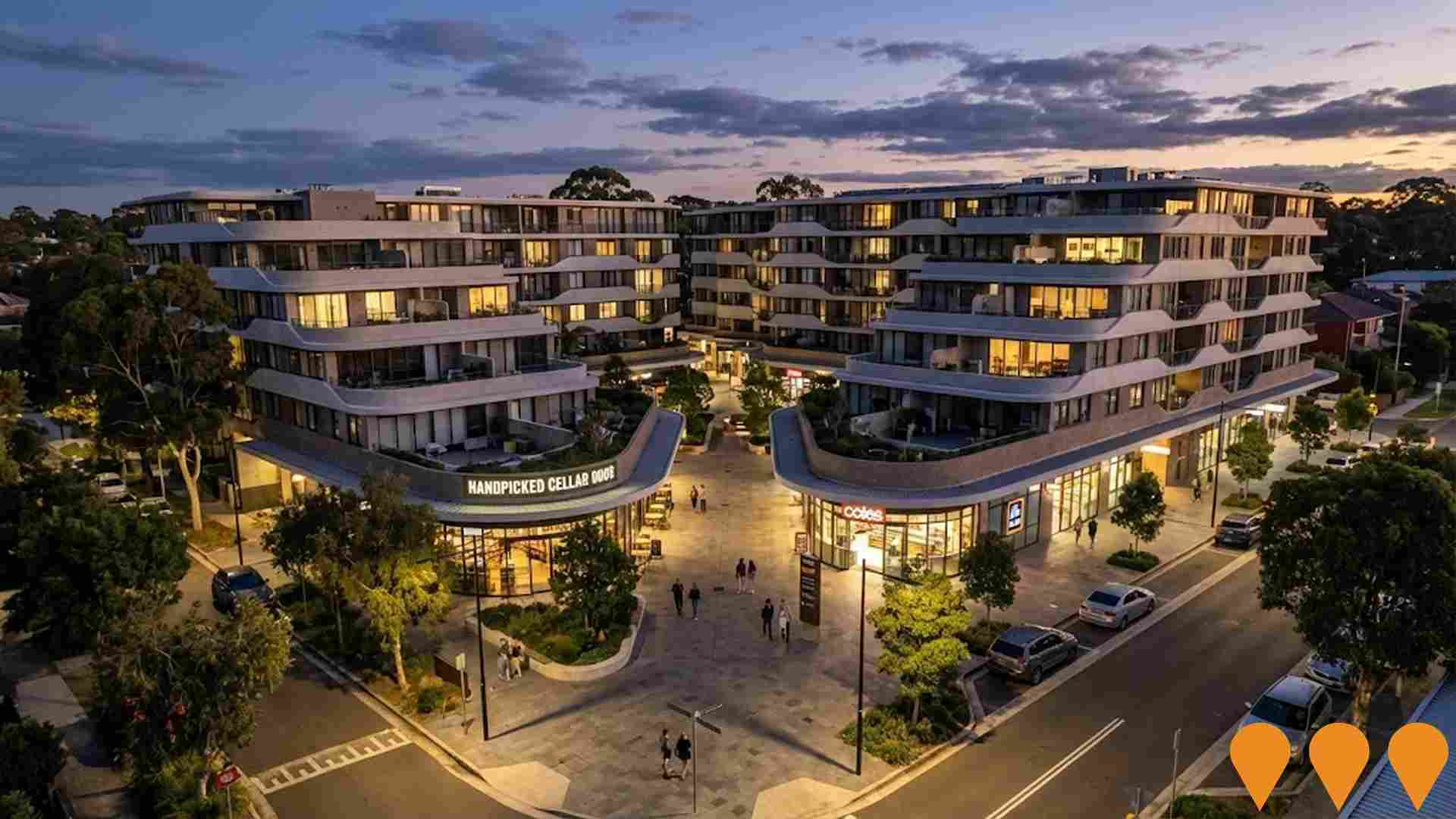
Live Caringbah
Live Caringbah is an approved mixed-use development in the Caringbah Medical Precinct comprising approximately 240 apartments (1-, 2-, and 3-bedroom) across two eight-storey towers, together with a five-storey medical/health facility. Designed with contemporary coastal-inspired architecture by DKO, the project includes rooftop gardens, study/home office spaces, and high-quality resident amenities. Originally proposed as residential-only, the project was approved on appeal by the Land and Environment Court in April 2024 following initial refusals by the planning panel.
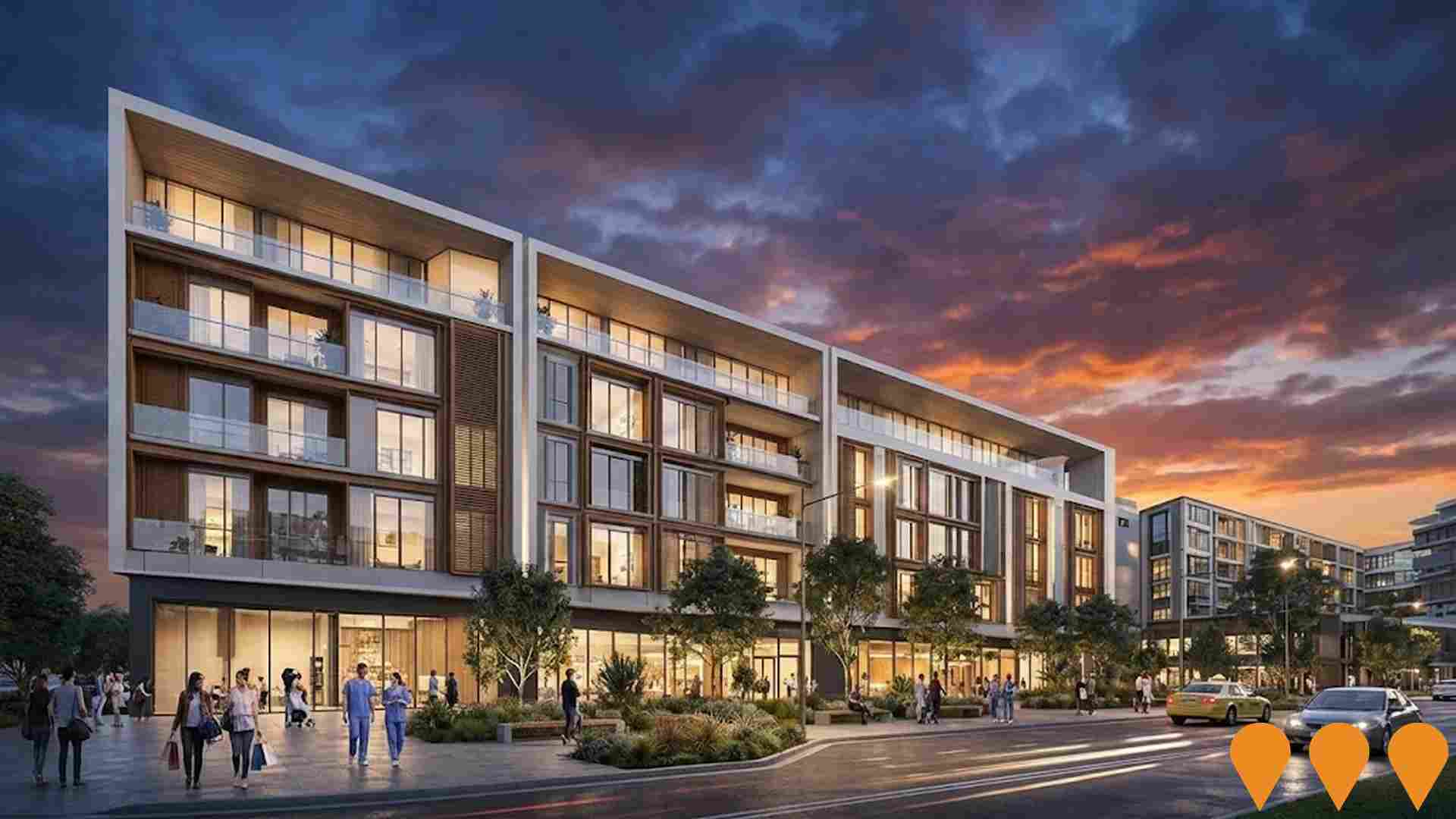
Sutherland to Cronulla Active Transport Link (SCATL)
The Sutherland to Cronulla Active Transport Link (SCATL) is an 11km cycleway and pedestrian path connecting Sutherland to Cronulla, utilizing the rail corridor and various locations. Stage 1 (Sutherland to Kirrawee) and Stage 2 (Kirrawee to Caringbah, including Jackson Avenue, Miranda to Gannons Road, Caringbah) are completed, with Stage 2 finalized in early 2024 using $65M in funding. Stage 3 (Caringbah to Cronulla) is in construction, with a focus on connecting key centers, transport hubs, schools, and business precincts in the Sutherland Shire.
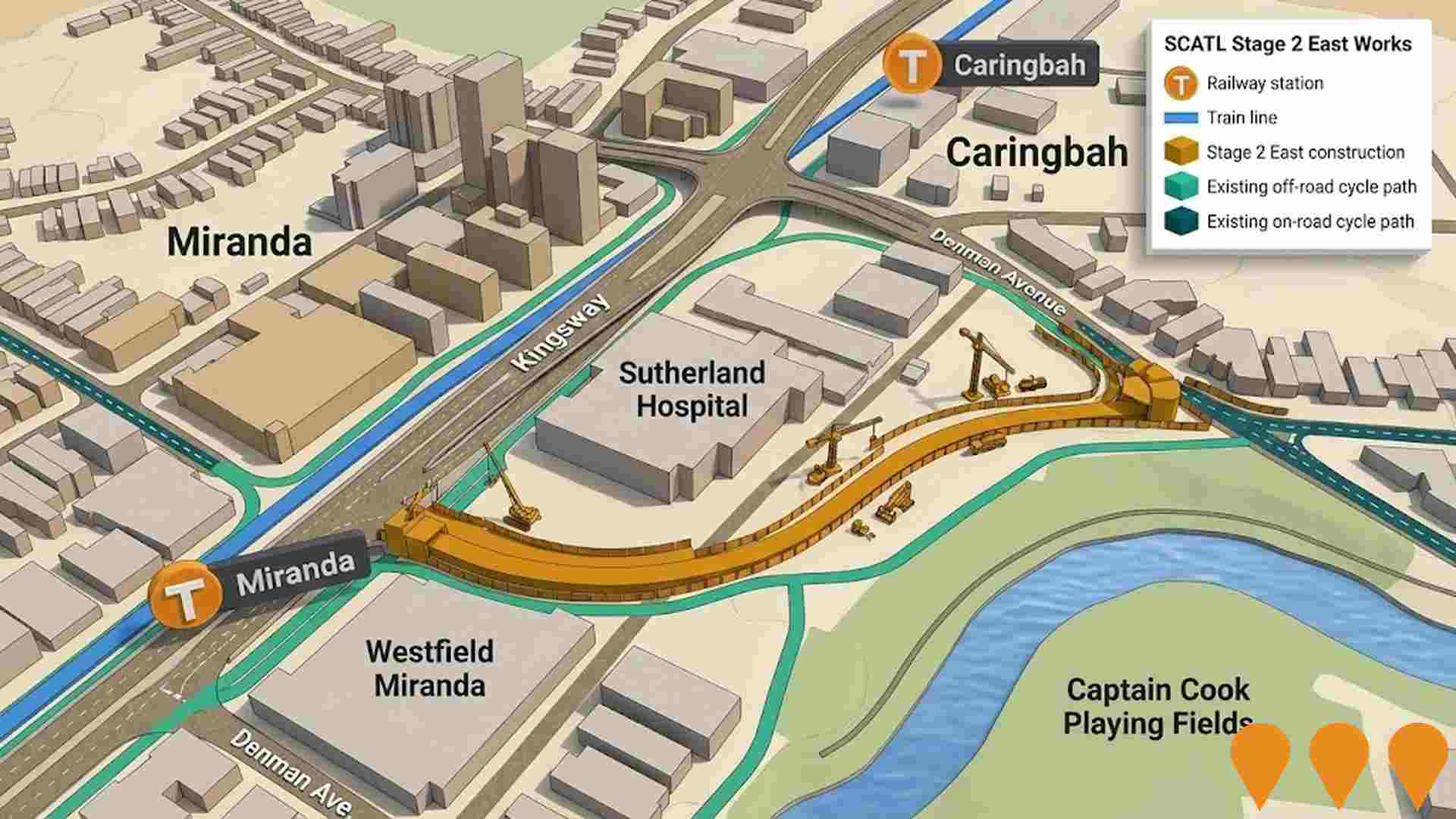
Caringbah Pavilion
A landmark mixed-use lifestyle precinct featuring 188 apartments (including 42 affordable housing units) above a vibrant retail village with a Coles supermarket, Liquorland, and specialty shops. The development comprises two residential towers (10-storey and 6-storey) with resort-style amenities including rooftop gardens, pool, gym, and wellness zones. Designed by CQ Studio, the project delivers 1-4 bedroom residences with premium finishes, engineered timber flooring, and European appliances. Located 200 meters from Caringbah train station, the precinct combines coastal living with urban convenience in the heart of Sutherland Shire.
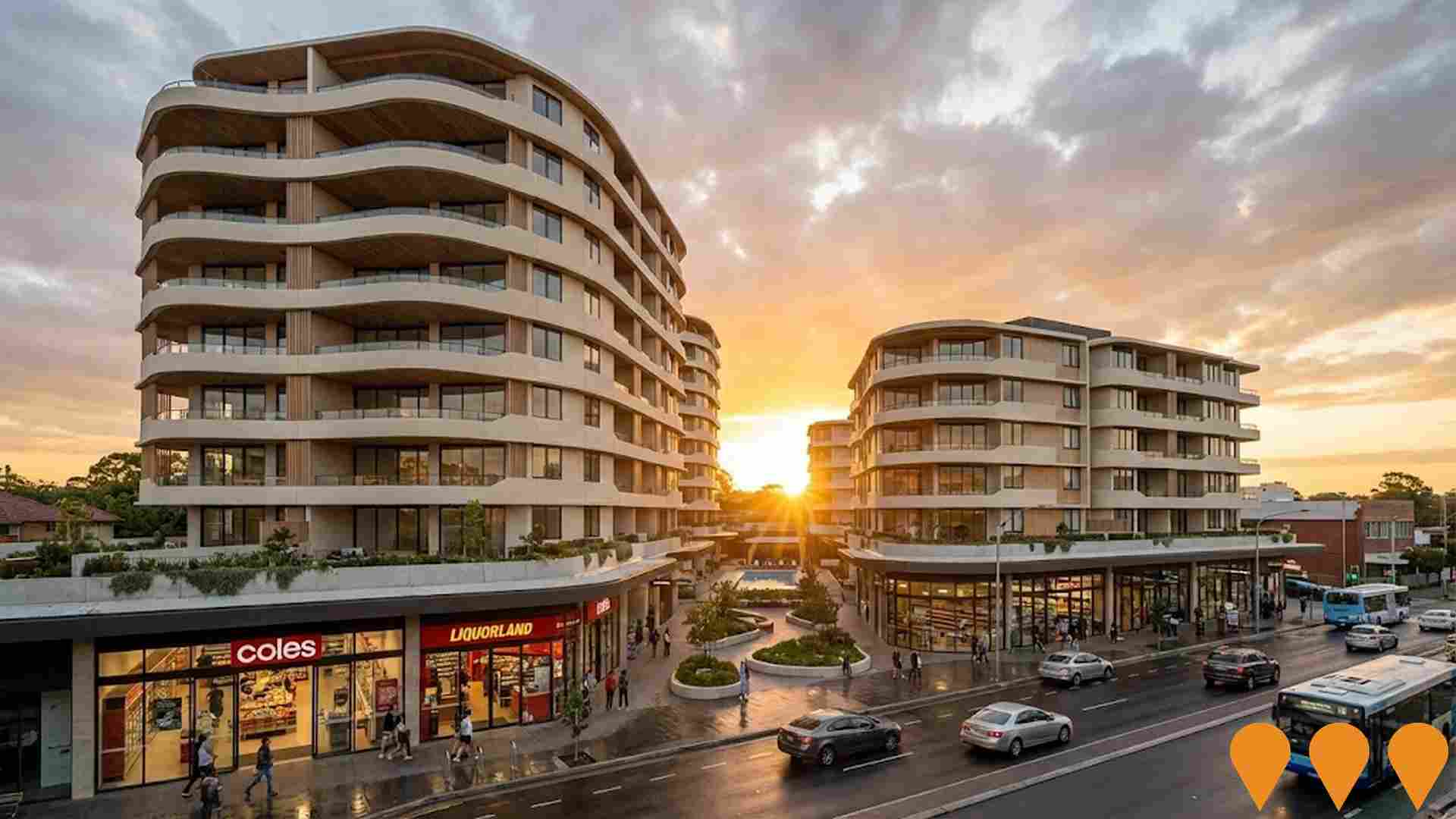
Frank Vickery Village Seniors Housing Expansion
Expansion of existing seniors housing complex to provide additional independent living units and care facilities. Enhances aged care options in the Sutherland Shire region.

Employment
The exceptional employment performance in Caringbah South places it among Australia's strongest labour markets
Caringbah South has a highly educated workforce with strong representation in professional services. Its unemployment rate was 1.4% as of June 2025, lower than Greater Sydney's rate of 4.2%.
Employment growth over the past year was estimated at 3.0%. As of June 2025, 7,417 residents were employed with an unemployment rate of 2.8%, slightly below Greater Sydney's rate. Workforce participation was 64.1%, comparable to Greater Sydney's 60.0%. Leading employment industries among residents include construction, health care & social assistance, and professional & technical services.
Construction shows particularly strong specialization with an employment share of 1.6 times the regional level. Conversely, health care & social assistance has lower representation at 11.5% compared to the regional average of 14.1%. The area appears to offer limited local employment opportunities as indicated by the count of Census working population versus resident population. Between June 2024 and June 2025, employment levels increased by 3.0%, while labour force increased by 3.3%, causing the unemployment rate to rise by 0.3 percentage points. In contrast, Greater Sydney experienced employment growth of 2.6% and labour force growth of 2.9%, with a similar rise in unemployment rate. Jobs and Skills Australia's national employment forecasts from May 2025 suggest potential future demand within Caringbah South. These projections estimate national employment growth of 6.6% over five years and 13.7% over ten years, with varying rates between industry sectors. Applying these projections to Caringbah South's employment mix suggests local growth of approximately 6.8% over five years and 13.6% over ten years, based on a simple weighting extrapolation for illustrative purposes.
Frequently Asked Questions - Employment
Income
Income metrics indicate excellent economic conditions, with the area achieving higher performance than 75% of national locations assessed by AreaSearch
AreaSearch's aggregation of latest postcode level ATO data released for financial year 2022 shows Caringbah South had a median income among taxpayers of $61,329 and an average income of $91,323. Nationally, these figures are extremely high, with Greater Sydney having median and average incomes of $56,994 and $80,856 respectively. Based on Wage Price Index growth of 12.61% since financial year 2022, current estimates for Caringbah South would be approximately $69,063 (median) and $102,839 (average) as of September 2025. According to the 2021 Census figures, household, family, and personal incomes in Caringbah South rank highly nationally, between the 82nd and 94th percentiles. Income analysis reveals that 33.0% of residents (4,471 people) fall into the $4,000+ bracket, differing from regional patterns where the $1,500 - $2,999 bracket dominates with 30.9%. Economic strength is evident through 46.2% of households achieving high weekly earnings exceeding $3,000, supporting elevated consumer spending. Housing accounts for 14.9% of income, and strong earnings rank residents within the 94th percentile for disposable income. The area's SEIFA income ranking places it in the 9th decile.
Frequently Asked Questions - Income
Housing
Caringbah South is characterized by a predominantly suburban housing profile, with above-average rates of outright home ownership
The dwelling structure in Caringbah South, as per the latest Census, consisted of 76.5% houses and 23.5% other dwellings (semi-detached, apartments, 'other' dwellings). In comparison, Sydney metro had 52.4% houses and 47.6% other dwellings. The home ownership level in Caringbah South was 47.5%, with mortgaged dwellings at 40.6% and rented ones at 11.9%. The median monthly mortgage repayment in the area was $3,400, higher than Sydney metro's average of $2,774. The median weekly rent figure was recorded at $730, compared to Sydney metro's $500. Nationally, Caringbah South's mortgage repayments were significantly higher than the Australian average of $1,863, while rents were substantially above the national figure of $375.
Frequently Asked Questions - Housing
Household Composition
Caringbah South features high concentrations of family households, with a higher-than-average median household size
Family households account for 82.0% of all households, including 45.7% couples with children, 27.2% couples without children, and 8.5% single parent families. Non-family households constitute the remaining 18.0%, with lone person households at 17.0% and group households comprising 1.0%. The median household size is 2.9 people, which is larger than the Greater Sydney average of 2.5.
Frequently Asked Questions - Households
Local Schools & Education
Caringbah South shows strong educational performance, ranking in the upper quartile nationally when assessed across multiple qualification and achievement indicators
Educational qualifications in Caringbah South trail regional benchmarks, with 31.1% of residents aged 15+ holding university degrees compared to 38.0% in Greater Sydney. This gap highlights potential for educational development and skills enhancement. Bachelor degrees lead at 22.0%, followed by postgraduate qualifications (6.7%) and graduate diplomas (2.4%). Trade and technical skills feature prominently, with 36.8% of residents aged 15+ holding vocational credentials – advanced diplomas (13.7%) and certificates (23.1%).
Educational participation is notably high, with 29.1% of residents currently enrolled in formal education. This includes 10.1% in primary education, 8.7% in secondary education, and 4.4% pursuing tertiary education. Educational provision includes Caringbah Public School and Laguna Street Public School, collectively serving 846 students as of the latest data point (2021). The area demonstrates above-average socio-educational conditions (ICSEA: 1088). Both schools focus exclusively on primary education, with secondary options available in surrounding areas. Limited local school capacity (6.2 places per 100 residents vs 13.9 regionally) means many families travel to nearby areas for schooling.
Frequently Asked Questions - Education
Schools Detail
Nearby Services & Amenities
Transport
Transport servicing is moderate compared to other areas nationally based on assessment of service frequency, route connectivity and accessibility
Caringbah South has 69 active public transport stops, all of which are bus stops. These stops are served by 15 different routes that together facilitate 737 weekly passenger trips. The area's transport accessibility is rated as excellent, with residents on average located 157 meters from the nearest stop.
Across all routes, service frequency averages 105 trips per day, which equates to approximately 10 weekly trips per individual stop.
Frequently Asked Questions - Transport
Transport Stops Detail
Health
Caringbah South's residents are extremely healthy with very low prevalence of common health conditions across all age groups
Analysis of health metrics shows strong performance throughout Caringbah South. Prevalence of common health conditions is very low across all age groups.
Private health cover rate is exceptionally high at approximately 67% of the total population (9,091 people), compared to the national average of 55.3%. The most common medical conditions are arthritis and asthma, impacting 8.1 and 6.3% of residents respectively. 73.3% of residents declare themselves completely clear of medical ailments, compared to 72.3% across Greater Sydney. As of the latest data (2021), 21.3% of residents are aged 65 and over (2,883 people). Health outcomes among seniors are particularly strong, broadly in line with the general population's health profile.
Frequently Asked Questions - Health
Cultural Diversity
Caringbah South ranks below the Australian average when compared to other local markets across a number of language and cultural background related metrics
Caringbah South, as per the Australian Bureau of Statistics Census Data from June 2016, had a population with 84.8% born in Australia, 93.6% being citizens, and 91.5% speaking English only at home. Christianity was the predominant religion, accounting for 65.6% of the population, compared to 61.2% across Greater Sydney. The top three ancestry groups were English (29.6%), Australian (27.2%), and Irish (9.6%).
Notably, Croatian (1.0%) and Maltese (1.1%) ethnicities were overrepresented in Caringbah South compared to regional averages of 0.7% and 0.9%, respectively. However, Greek ethnicity showed a slight underrepresentation at 2.7% compared to the regional average of 3.2%.
Frequently Asked Questions - Diversity
Age
Caringbah South hosts an older demographic, ranking in the top quartile nationwide
The median age in Caringbah South as of 2021 is 42 years, which is significantly higher than Greater Sydney's average of 37 years and Australia's national average of 38 years. The 65-74 age group makes up 10.8% of the population in Caringbah South, compared to a lower percentage in Greater Sydney. Meanwhile, the 25-34 age cohort represents 7.6%, which is less than the Greater Sydney average. Post-census data shows that the 75-84 age group grew from 5.9% to 7.0% of the population between 2016 and 2021, while the 55-64 cohort declined from 13.0% to 11.8%, and the 25-34 group decreased from 8.7% to 7.6%. By 2041, population forecasts indicate substantial demographic changes for Caringbah South, with the 85+ age group expected to grow by 125% (an increase of 586 people), reaching a total of 1,057 from 470. Notably, the combined 65+ age groups are projected to account for 77% of the total population growth, reflecting the area's aging demographic profile. In contrast, the 25-34 and 5-14 age cohorts are expected to experience population declines.



